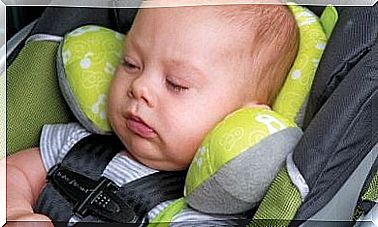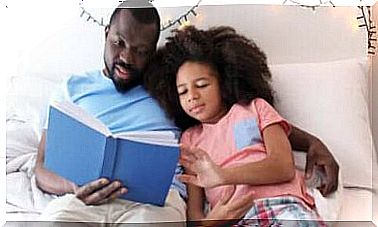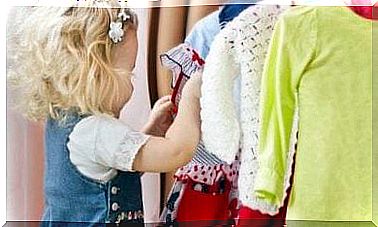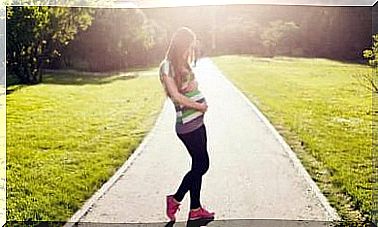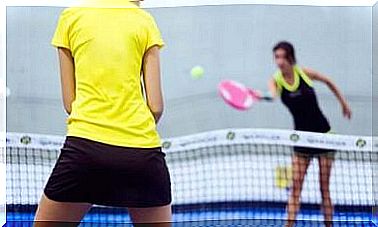7 Brain Gymnastics Exercises For Children

Brain gymnastics for children is ideal for contributing to the development of the two cerebral hemispheres, through language skills, mathematical calculation and symbolic thinking.
Brain gymnastics for kids is a training routine that prepares the body and mind for learning. These are exercises that help relieve stress, concentrate accumulated energy and awaken the brain.
These activities can be done at home or at school. Plus, as well as being convenient, they are fun for your children.
The essence of this technique consists in engaging the brain through the use of bodily commands that stimulate it. The great advantage of brain gymnastics for children is that it can be practiced by people of any age.
If one day you need to focus your attention on an activity, do one of these exercises before starting.
Brain gymnastics for children: a means to enhance learning
1. Draw the number 8
Ask your child to draw the number 8 many times using his fingers; that is, by drawing the figure in the air. You can also give him a sheet of paper and teach him how to draw it.
In this exercise, the most important thing is to use the non-dominant hand. In this way, the creative hemisphere of the brain is stimulated and the muscles of the hands are activated.
2. Cross crawl
Helps eliminate excess energy: ideal before starting an activity that requires concentration. Thanks to this simple exercise, both brain hemispheres are activated and work together.
The only thing the baby has to do is to stand up and, with the right elbow, touch the left knee. After that, the movement is reversed and, with the left elbow, the right knee is touched. The movements must be alternated several times.

3. Double scribble
This is a two-sided drawing activity where your little one will have to draw a figure with both hands at the same time. Thanks to this activity linguistic skills in writing, mathematical calculation and symbolic thinking are developed.
It is recommended to perform this exercise before devoting yourself to complex tasks.
4. Circle and square design
In this exercise, the child draws a triangle with his right hand, on the air or on a sheet of paper. At the same time, on the same surface, he will have to draw a circle with his left hand.
The movements must be repeated until each hand is able to draw its own figure independently. It is a dissociation exercise that helps strengthen the brain.
5. Taps and circles
Another activity to stimulate the two halves of the brain is to make circular movements with one hand on the abdomen. This movement is combined with touches that are given on the head with the other hand.
In this way you will ensure that the brain reaches an ideal state for learning and can thus assimilate new information.
6. Little fingers and index fingers
With the right fist closed, the child has to raise his little finger. At the same time, with his left fist closed, he will raise his index finger. Then, when you point it out, he will have to reverse the movements: the index finger in the right hand and the little finger in the left.
This activity helps to improve concentration and to develop fine motor skills.
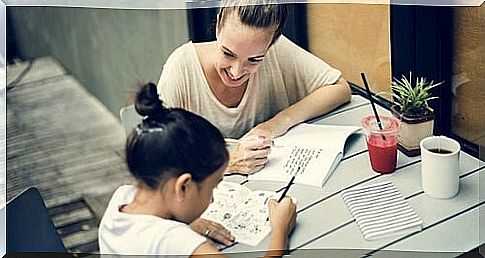
7. Exercises with the neck
Breathing deeply, invite the baby to relax his shoulders and bring his head back, with his eyes closed. Then he has to start moving his head from side to side and making small circles.
It is essential to breathe deeply throughout the exercise. Thanks to these movements it is possible to improve breathing, providing an adequate supply of oxygen to the brain.
You can establish a daily routine of 5 or 10 minutes in which to combine these exercises, and do it before school. In this way you will prepare your children to efficiently process any information they receive during the day.
Thanks to brain gymnastics for children, fundamental skills are developed from an early age. These include coordination, balance, fine and gross motor skills, concentration and visual perception. Before the children start doing their schoolwork, have them practice these activities so they can achieve better results.



